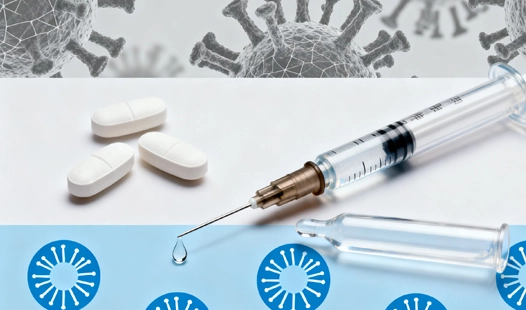What Are the Symptoms of FIP? A Guide for Pet Parents
Wet vs. Dry FIP: Differentiating Symptoms
Feline Infectious Peritonitis (FIP) is a complex and often misunderstood disease that affects cats of all ages, though it is most commonly seen in young cats and those with compromised immune systems. The virus responsible for FIP, a mutated form of the feline coronavirus, can trigger severe immune reactions, leading to a wide range of health complications. As a pet parent, recognizing the GS-441524 FIP symptoms early can be absolutely crucial for your feline friend's well-being, as early detection often improves the chances of effective management and supportive care. These symptoms may vary depending on whether the cat develops the wet (effusive) or dry (non-effusive) form of the disease, and they can include fever, lethargy, weight loss, fluid accumulation, or neurological issues. This comprehensive guide will help you better understand the signs of FIP, differentiate between its various forms, and know exactly when to seek prompt veterinary care to ensure your cat receives timely medical attention and the best possible outcomes.
|
|
|
Wet vs. Dry FIP: Differentiating Symptoms
FIP manifests in two primary forms: wet and dry. Understanding the differences between these forms can help pet parents identify potential symptoms more accurately.
Wet FIP Symptoms
Wet FIP, also known as effusive FIP, is characterized by the accumulation of fluid in the abdomen or chest cavity. Common symptoms include:
- Swollen abdomen (often referred to as a "pot-bellied" appearance)
- Difficulty breathing or rapid breathing
- Weight loss despite a swollen belly
- Lethargy and weakness
- Loss of appetite
- Fever that doesn't respond to antibiotics
Dry FIP Symptoms
Dry FIP, or non-effusive FIP, doesn't involve fluid accumulation. The FIP symptoms can be more subtle and may include:
- Weight loss
- Chronic fever
- Jaundice (yellowing of the eyes, gums, or skin)
- Neurological signs (e.g., loss of balance, seizures)
- Eye inflammation or changes in eye color
- Poor coat condition
- Enlarged lymph nodes
Early Warning Signs: When to Act?
Detecting FIP in its early stages can be challenging, as initial symptoms may be vague or mimic other conditions. However, there are several warning signs that pet parents should be vigilant about:
Persistent Fever
A fever that doesn't respond to antibiotics and persists for more than a few days could be an early indicator of FIP. Regular temperature checks can help monitor this symptom.
Gradual Weight Loss
Unexplained weight loss, especially when coupled with a normal or increased appetite, warrants attention. Keep track of your cat's weight regularly to notice any significant changes.
Changes in Behavior
Lethargy, decreased interest in play, or increased sleeping may signal the onset of FIP. Pay attention to any sudden shifts in your cat's energy levels or daily routines.
Gastrointestinal Issues
Chronic diarrhea or vomiting that doesn't improve with standard treatments could be an early FIP symptoms. Monitor your cat's litter box habits and eating patterns closely.
Respiratory Distress
Difficulty breathing, rapid breathing, or open-mouth breathing, especially in conjunction with other symptoms, should prompt immediate veterinary attention.
|
|
|
|
Mimicking Conditions: Avoiding Misdiagnosis
FIP symptoms can often overlap with other feline health issues, making diagnosis challenging. Understanding these potential mimics can help pet parents provide more accurate information to their veterinarians.
Conditions That May Resemble FIP
- Feline Leukemia Virus (FeLV)
- Feline Immunodeficiency Virus (FIV)
- Toxoplasmosis
- Lymphoma
- Bacterial infections
- Liver disease
- Kidney disease
Diagnostic Challenges
Diagnosing FIP often requires a careful combination of clinical signs, laboratory tests, and imaging studies, as the disease can present in a wide variety of ways that overlap with other feline illnesses. No single test can definitively confirm FIP, which makes it essential for veterinarians to evaluate the entire clinical picture, including the cat's history, physical examination findings, and response to previous treatments. Blood work may reveal abnormalities such as elevated protein levels or changes in white blood cell counts, while imaging studies like ultrasounds or X-rays can help detect fluid accumulation or organ changes. Because of the disease's complexity, accurate diagnosis relies on a holistic approach that integrates multiple diagnostic tools and expert clinical judgment.
The Role of GS-441524 in Treatment
Recent research has shown significant promise in the use of GS-441524 for treating FIP, a disease that was once considered almost universally fatal. This antiviral compound has demonstrated strong efficacy in both laboratory and clinical trials, helping to reduce viral load and improve overall health outcomes in affected cats. Many cats treated with GS-441524 have shown remarkable recovery, which has provided hope to pet owners and veterinarians alike. However, it is crucial to emphasize that this treatment should only be administered under strict veterinary supervision, as proper dosing, monitoring for side effects, and supportive care are essential for ensuring both safety and effectiveness throughout the treatment process.
Conclusion
Recognizing the symptoms of FIP early can significantly impact the prognosis for affected cats. As a pet parent, your vigilance in observing changes in your cat's health and behavior is crucial. While FIP remains a challenging disease, advancements in treatment options, including the use of GS-441524, offer new hope for affected felines.
Remember, if you notice any persistent or concerning symptoms in your cat, don't hesitate to consult with your veterinarian. Early intervention and proper diagnosis are key to managing FIP and ensuring the best possible outcome for your feline companion.
|
|
|
FAQ
1. Can FIP be prevented?
While there's no guaranteed prevention for FIP, maintaining good hygiene, reducing stress, and keeping your cat's environment clean can help support their overall health and immunity.
2. Is FIP contagious to other cats or humans?
FIP itself is not contagious. However, the feline coronavirus that can mutate into FIP can spread between cats. Humans cannot contract FIP or the feline coronavirus.
3. How is FIP diagnosed?
Diagnosing FIP typically involves a combination of clinical signs, blood tests, fluid analysis (if present), and sometimes imaging studies. A definitive diagnosis can be challenging and may require multiple tests.
Discover Advanced FIP Solutions with BLOOM TECH
Innovative approaches are crucial in the fight against feline infectious diseases (FIDs), and we at BLOOM TECH know this better than anybody. We are proud to be a leading GS-441524 manufacturer, thanks to our dedication to quality and innovation. We guarantee the highest standards in manufacturing GS-441524 for veterinary use with our state-of-the-art GMP-certified facilities and strict quality control methods.
Research and development pertaining to feline health is the only focus of our specialised team. Trust BLOOM TECH as your trusty partner in the battle against FIP, whether you're a veterinary expert seeking supplies or a pet care centre searching for top-tier goods. Contact us at Sales@bloomtechz.com to learn more about how our GS-441524 products can support your FIP management strategies.
References
1. Pedersen, N.C. (2019). Feline Infectious Peritonitis: Diagnosis and Treatment. Journal of Feline Medicine and Surgery, 21(5), 424-436.
2. Addie, D.D. (2020). Feline Coronavirus and Feline Infectious Peritonitis Diagnosis and Treatment. Veterinary Clinics of North America: Small Animal Practice, 50(5), 1045-1058.
3. Murphy, B.G., et al. (2018). The nucleoside analog GS-441524 strongly inhibits feline infectious peritonitis (FIP) virus in tissue culture and experimental cat infection studies. Veterinary Microbiology, 219, 226-233.
4. Kipar, A., & Meli, M.L. (2014). Feline Infectious Peritonitis: Still an Enigma? Veterinary Pathology, 51(2), 505-526.

Echo
9 years of experience in chemical articles; Doctoral degree; Organic Chemistry major; R&D-4 Dept; Technology support; R&D engineer
Anticipating your Business & Technology support inquiry
Please send us the products that interest you, and we will provide you with one-on-one service
Recommended Blog
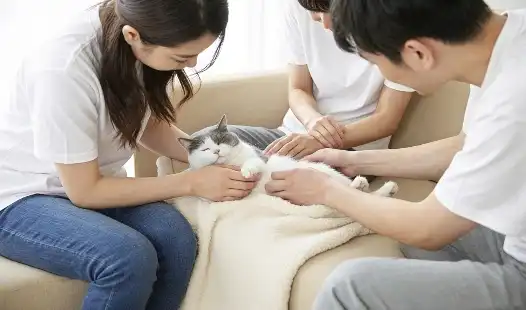
The Most Important Nursing Care Tips for Cats on GS-441524
_副本_1757906640273.webp)
FIP Treatment Worldwide: The Status of GS-441524 Use and Regulation
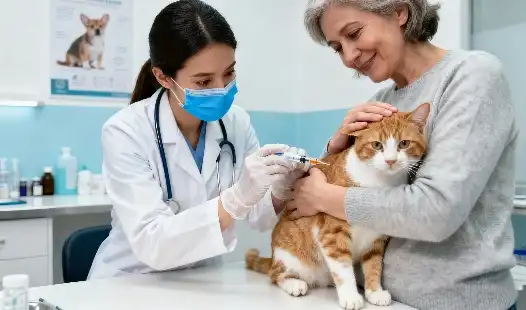
Post-Vaccination Considerations for Cats Receiving FIP Vaccines







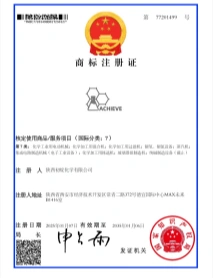

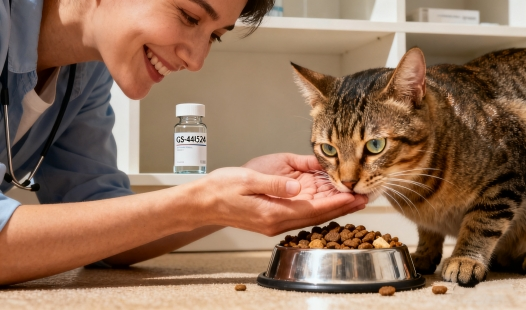

_副本_1760931996981.webp)
_副本_1758508468100.webp)

